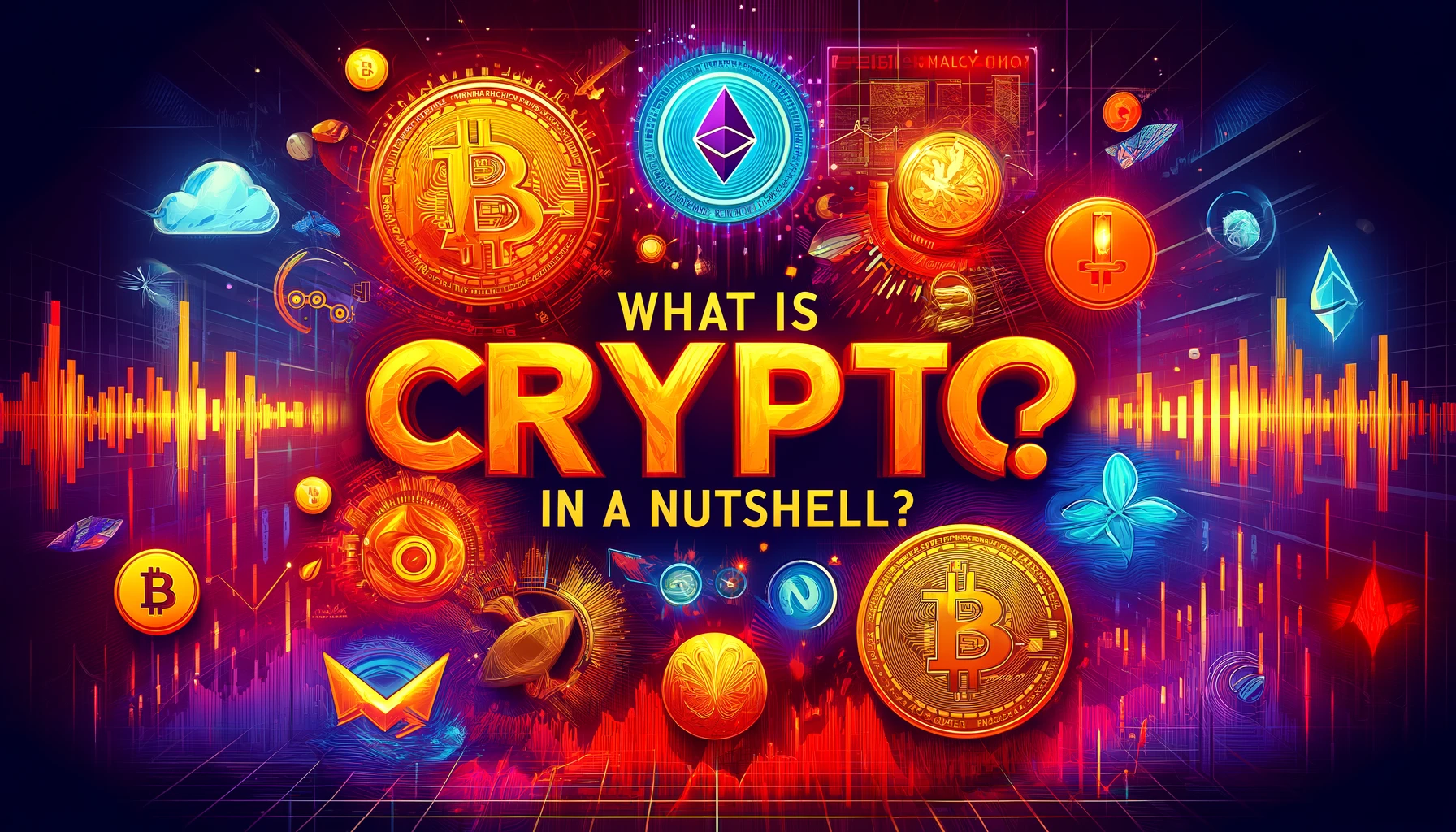Cryptocurrency, often referred to as crypto, has revolutionized the world of finance. But what exactly is crypto in a nutshell? This article aims to demystify the concept of cryptocurrency, explain how it works, and highlight its significance in the modern financial landscape. By the end, you’ll have a comprehensive understanding of this digital phenomenon.
Understanding Cryptocurrency
Cryptocurrency is a digital or virtual form of currency that uses cryptography for security. Unlike traditional currencies, cryptocurrencies operate on a technology called blockchain, which is a decentralized ledger of all transactions across a network of computers. This decentralized nature eliminates the need for a central authority, such as a bank, to manage and verify transactions.
How Cryptocurrencies Work
Cryptocurrencies operate on a peer-to-peer network, allowing users to send and receive payments without relying on a third party. Here’s a step-by-step look at how it works:
- Blockchain Technology: At the heart of cryptocurrency is blockchain technology. A blockchain is a chain of blocks, each containing a list of transactions. These blocks are linked and secured using cryptographic hashes.
- Decentralization: Unlike traditional financial systems, the blockchain is decentralized, meaning no single entity controls it. This ensures transparency and security.
- Mining: Cryptocurrencies are created through a process called mining. Miners use powerful computers to solve complex mathematical problems that validate and add transactions to the blockchain. As a reward, miners receive newly created cryptocurrency.
- Wallets: Users store their cryptocurrencies in digital wallets, which can be software-based or hardware-based. These wallets allow users to send, receive, and manage their crypto holdings.
Popular Cryptocurrencies
There are thousands of cryptocurrencies available today, but some of the most popular include:
- Bitcoin (BTC): Launched in 2009 by an anonymous person or group known as Satoshi Nakamoto, Bitcoin is the first and most well-known cryptocurrency.
- Ethereum (ETH): Introduced in 2015, Ethereum is a decentralized platform that enables smart contracts and decentralized applications (DApps) to be built and run without any downtime, fraud, or interference.
- Ripple (XRP): Ripple is both a platform and a currency. Its primary goal is to enable fast, cost-effective international payments.
- Litecoin (LTC): Created by Charlie Lee in 2011, Litecoin is similar to Bitcoin but offers faster transaction times and a different hashing algorithm.
Benefits of Cryptocurrencies
Cryptocurrencies offer several advantages over traditional financial systems:
- Decentralization: No central authority controls cryptocurrencies, which can reduce the risk of corruption or manipulation.
- Transparency: All transactions are recorded on a public ledger, providing transparency and traceability.
- Security: Cryptographic security makes it difficult for transactions to be altered or counterfeited.
- Lower Transaction Fees: Cryptocurrency transactions often have lower fees compared to traditional financial transactions.
- Accessibility: Cryptocurrencies can be accessed and used by anyone with an internet connection, promoting financial inclusion.
Risks and Challenges
Despite their benefits, cryptocurrencies also come with risks and challenges:
- Volatility: Cryptocurrencies are known for their price volatility, which can result in significant gains or losses.
- Regulatory Uncertainty: The regulatory environment for cryptocurrencies is still evolving, leading to uncertainty for investors and users.
- Security Risks: While blockchain technology is secure, exchanges and wallets can be vulnerable to hacking and other security threats.
- Lack of Acceptance: Despite growing popularity, cryptocurrencies are not universally accepted as a form of payment.
How to Get Started with Cryptocurrencies
If you’re interested in exploring the world of cryptocurrencies, here are some steps to get started:
- Educate Yourself: Learn about the basics of cryptocurrencies, blockchain technology, and the different types of cryptocurrencies available. Resources like Coinbase’s Learn section offer valuable information.
- Choose a Reliable Exchange: Select a reputable cryptocurrency exchange to buy, sell, and trade cryptocurrencies. Some popular exchanges include Coinbase, Binance, and Kraken.
- Set Up a Wallet: Create a digital wallet to store your cryptocurrencies securely. Wallets can be software-based (online) or hardware-based (offline).
- Start Small: Begin by investing a small amount to get a feel for the market and how it operates.
- Stay Informed: Keep up with the latest news and developments in the cryptocurrency world. Websites like CoinDesk provide up-to-date news and analysis.
Future of Cryptocurrencies
The future of cryptocurrencies looks promising, with ongoing advancements in technology and increasing adoption by individuals and institutions. Innovations such as decentralized finance (DeFi) and non-fungible tokens (NFTs) are expanding the use cases and possibilities for cryptocurrencies. However, it’s essential to stay informed and be aware of the evolving regulatory landscape and potential risks.
Conclusion
In a nutshell, cryptocurrencies represent a significant shift in the financial landscape, offering numerous benefits and opportunities. By understanding the basics, staying informed, and taking a cautious approach, you can navigate the world of crypto with confidence. Whether you’re interested in investing, using crypto for transactions, or simply learning more, this guide provides a solid foundation to get started.





